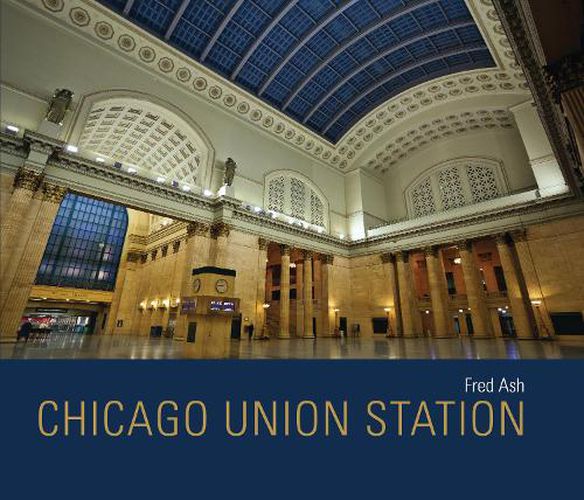Readings Newsletter
Become a Readings Member to make your shopping experience even easier.
Sign in or sign up for free!
You’re not far away from qualifying for FREE standard shipping within Australia
You’ve qualified for FREE standard shipping within Australia
The cart is loading…






More than a century before airlines placed it at the center of their systems, Chicago was already the nation’s transportation hub -from Union Station, passengers could reach major cities on the Atlantic, Pacific and Gulf coasts as well as countless points in between.
Chicago’s history is tightly linked to its railroads. Railroad historian Fred Ash begins in the mid 1800’s, when Chicago dominated Midwest trade and was referred to as the Railroad Capital of the World. During this period, swings in the political climate significantly modified the relationship between the local government and its largest landholders, the railroads. From here, Ash highlights competition at the turn of the twentieth century between railroad companies that greatly influenced Chicago’s urban landscape. Profiling the fascinating stories of businessmen, politicians, workers, and immigrants whose everyday lives were affected by the bustling transportation hub, Ash documents the impact Union Station had on the growing city and the entire Midwest.
Featuring more than 100 photographs of the famous beaux art architecture, Chicago Union Station is a beautifully illustrated tribute to one of America’s overlooked treasures.
$9.00 standard shipping within Australia
FREE standard shipping within Australia for orders over $100.00
Express & International shipping calculated at checkout
More than a century before airlines placed it at the center of their systems, Chicago was already the nation’s transportation hub -from Union Station, passengers could reach major cities on the Atlantic, Pacific and Gulf coasts as well as countless points in between.
Chicago’s history is tightly linked to its railroads. Railroad historian Fred Ash begins in the mid 1800’s, when Chicago dominated Midwest trade and was referred to as the Railroad Capital of the World. During this period, swings in the political climate significantly modified the relationship between the local government and its largest landholders, the railroads. From here, Ash highlights competition at the turn of the twentieth century between railroad companies that greatly influenced Chicago’s urban landscape. Profiling the fascinating stories of businessmen, politicians, workers, and immigrants whose everyday lives were affected by the bustling transportation hub, Ash documents the impact Union Station had on the growing city and the entire Midwest.
Featuring more than 100 photographs of the famous beaux art architecture, Chicago Union Station is a beautifully illustrated tribute to one of America’s overlooked treasures.